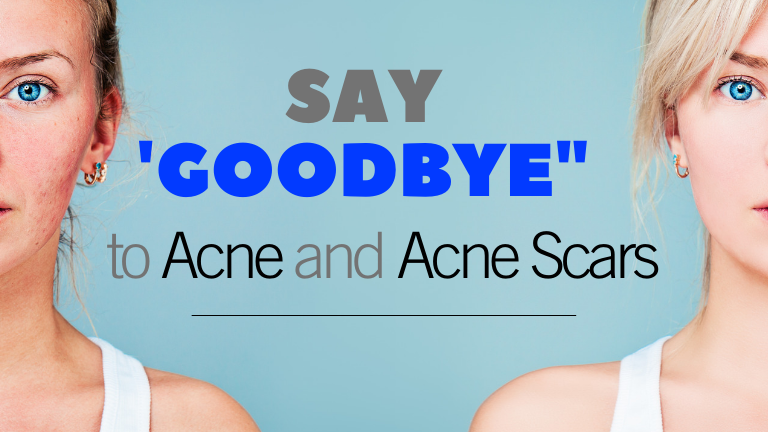For some, breakouts persist past puberty and cause serious skin anxiety. Get rid of your acne once and for all with anti-acne treatments at Lesprit Medical Clinic. Learn more about Acne Clearance Laser Treatment, Medical Facials, Chemical Peels and our physician-grade line of products and say goodbye to breakouts!
Acne Treatments
Acne is one of the most common skin condition affecting millions of women not just in their teens, but also those in their 30s, 40s, 50s and beyond. Acne occurs when a pore in the skin gets clogged, trapping dead skin cells, sebum (the skin’s natural oil) and bacteria inside the pore.
HOW TO DEAL: Cleansing your face every day is the first step toward clearing up your skin. You can also reach for a cleanser or toner with salicylic acid ora spot treatment with benzoyl peroxide. Skin care products with AHAs (alpha hydroxy acids) can also help decongest build up in the pores and reduce the accumulation of dead cells.
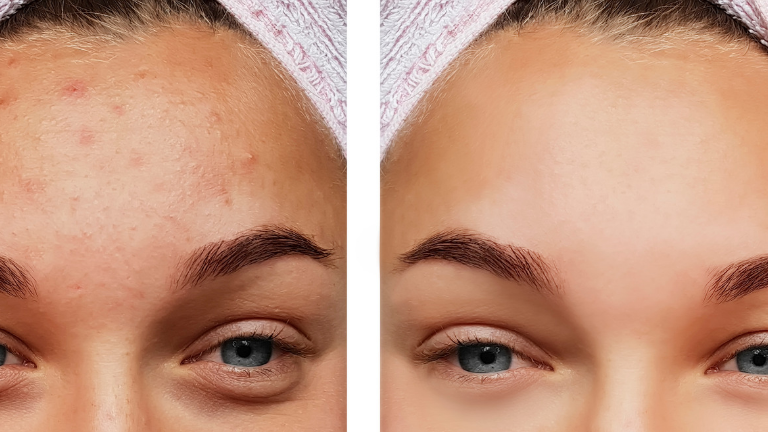
Most common solutions for acne include:
Acne Home Care: Medical-grade Skin Care
The first course of action for all grades of acne is proper home care including skincare products to cleanse lifting impurities, removing excess oil and balancing the skin. Why medical-grade skin care? The active ingredients in medical skincare contain maximum concentration of actives and making them more efficacious than other over-the-counter options.
Acne Treatment: Antibiotics, Retinoids and Oral Contraceptives
For more severe acne prescription antibiotics may be required to target the acne systemically. Prescription Vitamin A can also help. Retin A changes the responsiveness of the skin to stress, helps the skin adjust to hormonal fluctuations, stops excess sebum production and speeds up the growth of skin around pores.
Acne Treatment: Chemical Peels
Chemical Peels can reduce acne symptoms and help heal and smoothen the skin at the same time. Chemical Peels for acne include a salicylic acid to kill P-acnes bacteria and glycolic acid to remove dead skin cells and relieve congested pores. The peels used at Lesprit Medical Clinic can be customized with additional ingredients to help with inflammation and reduction post-acne pigmentation.
Acne Treatment: Medical Facials
Our acne medical facials use various diagnostic and treatment modalities to cleanse and unclog congested pores and to infuse acne specific solutions. Following that suction-assisted handpieces gently extract blackheads, whiteheads, and other impurities. Blue light, oxygen and laser therapy can be added to the treatment to target and destroy porphyrins that live inside acne and free radicals-producing bacteria.
Laser and Light Therapy
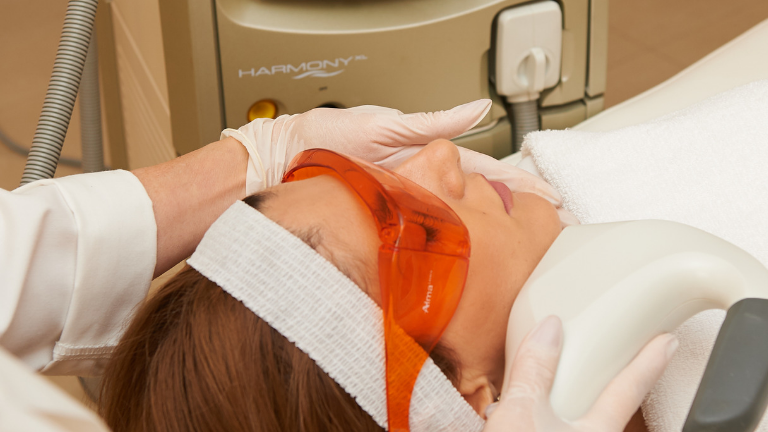
Take the first step to clear and healthy skin today. Our physician can provide assessment, diagnosis and treatment for all types of acne, as well as advice on an individual care plan for your skin. Treatment may involve prescription medication, skin care and medical facial treatment including chemical peels, laser treatments and light therapy.
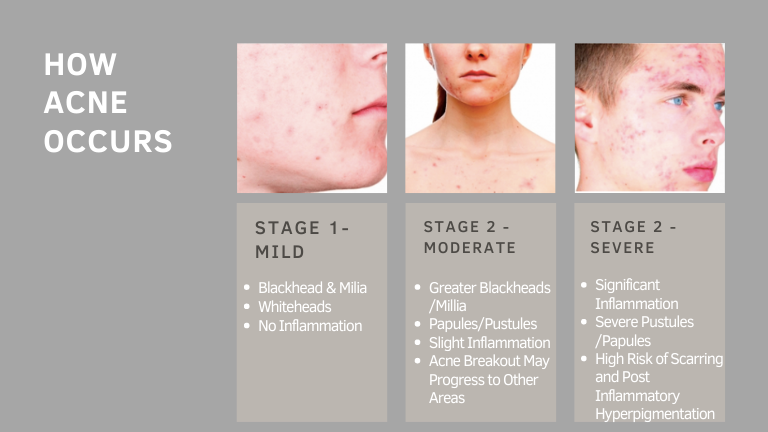
How does acne evolve:
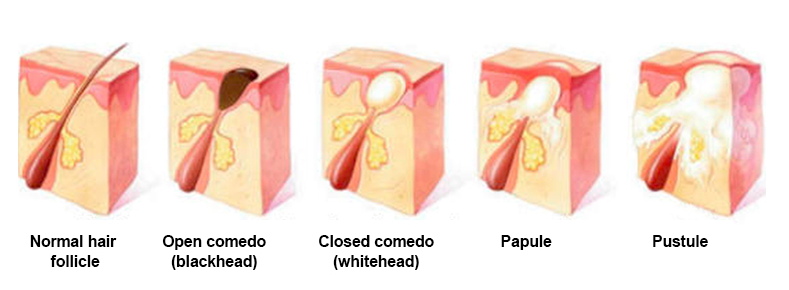
Whiteheads and Blackheads
Dead skin cells are continuously shed from the walls of hair follicles during a process known as keratinization. Under normal circumstances, the skin cells do not build up and the sebum is secreted onto the skin’s surface. However special conditions can promote an increase in keratinization. If too many skin cells build up in the follicle, they may actually block the secretion of sebum, which causes a plug to form. This plug is what is commonly known as a blackhead or a whitehead, which are mild forms of acne. Blackheads generally appear as small, black holes on the skin’s surface. When the follicle is not completely blocked, it opens slightly and the top of the plug turns black, which is what you see as a blackhead. In contrast, whiteheads generally appear as small, skin-colored bumps beneath the skin’s surface. The follicle opening is completely blocked with sebum and dead skin cells, which is what you see as a whitehead.
Papules
Acne formation gets even more complex. In response to hormones known as androgens, like progesterone and testosterone, the sebaceous glands produce more sebum. This is why acne usually starts to occur during puberty and why women may experience more acne at the onset of menstruation. When excess sebum is produced in already blocked pores the follicle becomes inflamed. Further inflammation can be caused by bacterial overgrowth as well. Together, this causes a papule to form, which is a red, raised bump on the skin
Pustules
Continual sebum production and bacterial overgrowth increase the inflammation around the follicle even further. Like a dam that cannot hold any more water, the follicle may eventually rupture, spilling its contents into the skin layers below. When this happens, pustules form. This is because your body sends white blood cells to the area as an immune response. These white blood cells along with other debris create pus, which is what gives pimples their white or yellowish center.
Nodules and Cysts
In cases in which inflammation becomes even more severe, nodules and cysts may develop. Nodules are large, round bumps that originate deep beneath the skin’s surface. They are typically caused by severe inflammation and infection within the dermis. Although similar to nodules, cysts are usually filled with pus. Both of these types of acne may be long lasting and painful. In addition, nodules and cysts may lead to acne scarring and generally only respond to intense form of treatment.






